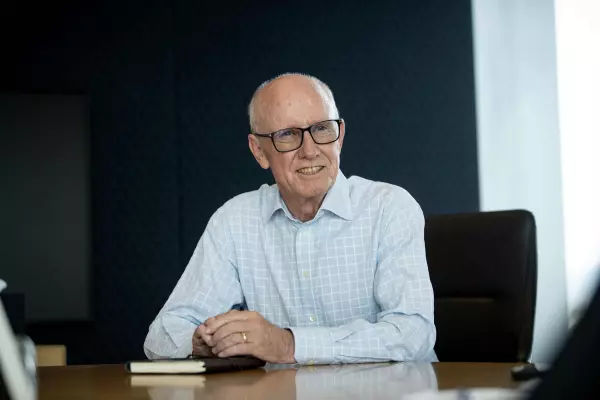One of the more complex and unsung aspects of business leadership is the people factor. Part of this means adapting to reflect a New Zealand market that is highly diverse in ethnicity, culture and gender.
In July, the global executive committee of Schneider Electric, the Paris-based multinational company whose New Zealand branch I lead, reached a diversity milestone: women made up 44% of its membership. That’s seven out of 16, up from none in 2006 and just one in 2010. However, female representation among our 128,000 colleagues worldwide is lower than we’d like. What are the lessons for leaders in this evolving environment?
Shout out diversity and inclusivity
These should be core values of the business. Many companies, such as in the trades, are highly male-dominated (and still seen as very “blokey”), so there is a huge opportunity to address gender balance. Schneider Electric, for example, has worked to encourage many more female staff to join its sales force, an area where it has historically been hard to attract them. But we, like many enterprises, need to challenge ourselves to do better.
Once you have brought new people in, make sure they have the support they need to feel safe and thrive at work, and ensure leaders are actively identifying and stamping out any inappropriate behaviour, harassment or unconscious bias. We need to make an industry-wide commitment to call out such misbehaviour or discrimination as it happens. If we don’t act, nothing will change. But it must. For many companies, this may require external specialist support for a time, and boards need to ensure that senior management is fit to lead the move towards diversity and inclusivity.
Understand that it takes time to evolve
For most larger companies, achieving true diversity can take years of strategic planning, targeted development, and awareness and accountability mechanisms. A lot of effort is required to erode the gender pay gap, to combat unconscious bias, to promote a spirit of inclusiveness, and to adjust family leave and flexible-working policies to make life and career development easier. Achieving greater diversity and gender balance requires the public support of the whole organisation, from the CEO through to everyone involved in making decisions on hiring or promoting staff.
A cultural mindset shift of this kind requires a holistic toolkit of approaches and actions, involving workshops, education sessions and policy development, with continuous monitoring of progress and implementation.
Recruit from everywhere
Not everyone is going to go to university. Many people prefer to learn hands-on in industry rather than in a classroom. There used to be a mindset that learning a trade was a last resort for the non-academic, but this couldn’t be further from the truth: some of our most successful business owners are qualified electricians who are now significant employers. A lot of people in our management team started on the front line in electrical services or as electrical wholesalers. Now they are industry leaders, which shows that such careers can open a multitude of doors, especially with the expansion of digitalisation and software specialisation, which many electricians have moved into and where they’re now earning high incomes.
Give practical support to the development of diversity
Many sectors are crying out for more skilled workers, and there is huge opportunity to recruit more women into construction, engineering, and the trades, including as apprentices. According to University of Auckland data, females make up 29% of the current electrical engineering roll, but that figure has been as low as 16% in 2017 and 2019. Of the 56 students doing their final undergraduate year, just 16 are women. Things were even worse in 2017, when only 10 were out of 62.
There is clearly room to improve female participation, and companies can work with universities and training organisations on sponsorships, scholarships, and other financial and practical solutions to achieve this.
Companies could also make part of their leaders’ bonuses contingent on the delivery of equal pay, the upholding of ethical conduct, and helping staff to feel safe.
Diversity in business is in part about encouraging diversity of thought, enabling people from different backgrounds – including age, gender, ethnicity and nationality – to bring to the table new ideas for innovation, problem solving and achieving excellence based on their life experience and their different training and education.
A big part of diversity in business is being prepared to be open and honest. As a manager, part of my job is to help find people the roles they are best suited to, even if that means I lose talent from my own team to another part of the business. There are many ways people can shine with their skill set. One of the most influential leaders in our business, for example, has no direct reports. That contradicts most people’s idea of leadership, but it shows that even a senior position can be more diverse than a traditional management model.
That openness has to go both ways – being truly diverse involves creating a safe environment for people to question and challenge authority. No one has a monopoly on good ideas, so you need channels and platforms where you can hear from everyone equally, no matter their demographic profile or tenure in the business.
Diversity begets diversity: we are able to have younger staff represent the business among university students (young talent we hope to recruit) and convey our culture and how we walk the talk in sustainability and people management, as well as products and services.
Look at leadership
Diversity is not just about staffing – it goes right to the top, where decisions are made, and those decisions need to reflect what the market looks like.
As part of our sustainability goals, Schneider Electric has committed to ensuring that 50% of new hires worldwide by 2025 are women, up from around 43% at present. We want 40% of our frontline managers, and 30% of our senior leaders, to be women by then – up from about one-quarter now. Having more women at the top makes it easier for equality and gender balance to filter through the organisation, because leaders (the most visible people in a company) are setting the priorities and the standard for inclusion.
Invest in mental health
We might assume this is a given, but there is so much more that businesses can do. St John does excellent mental health training in workplaces, and refresher courses can be run on a semi-regular basis to give people opportunities to report when they are under undue stress. There are key times in people’s lives when they need more support or are at risk – when they have health issues, suffer a bereavement, or return from parental leave, for example – and centring mental health in everyday awareness makes it easier for staff to flag (and solve) issues before they become big problems.
Ray Dunn is executive general manager and country president of Schneider Electric in Auckland. Schneider Electric is an Excellence Award winner for Best Workplace Flexibility Programme in the 2021 HRD Awards New Zealand.










